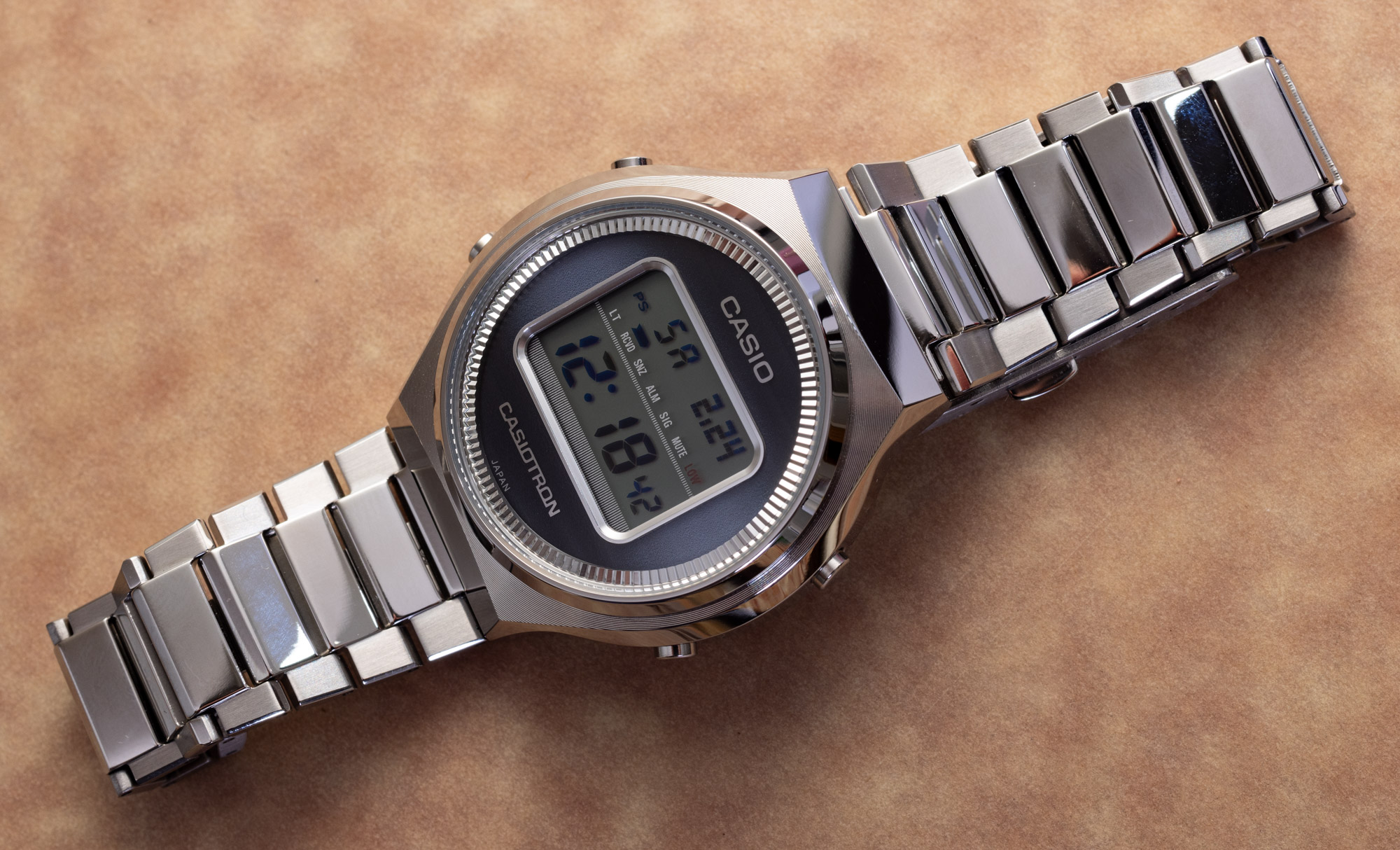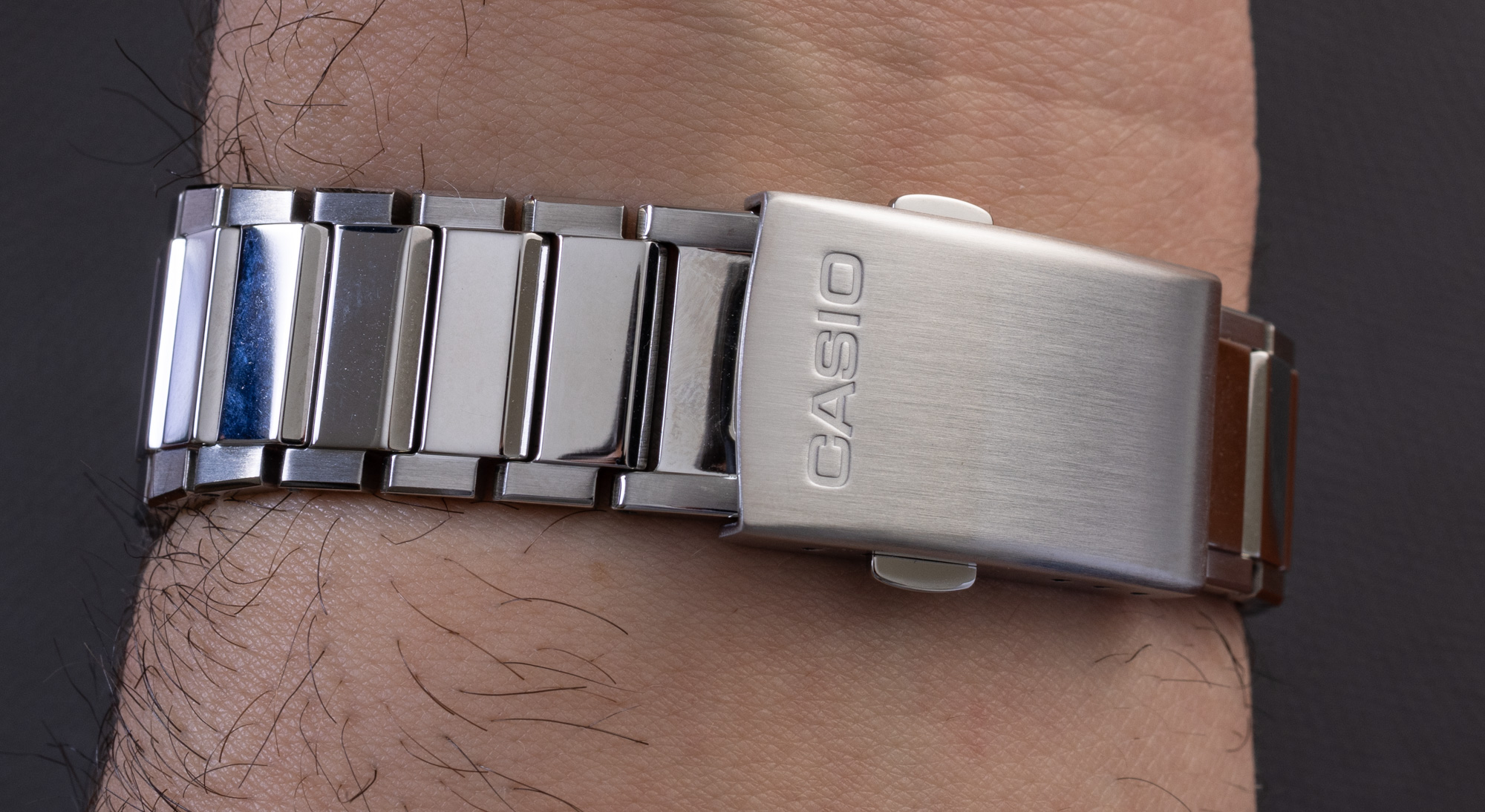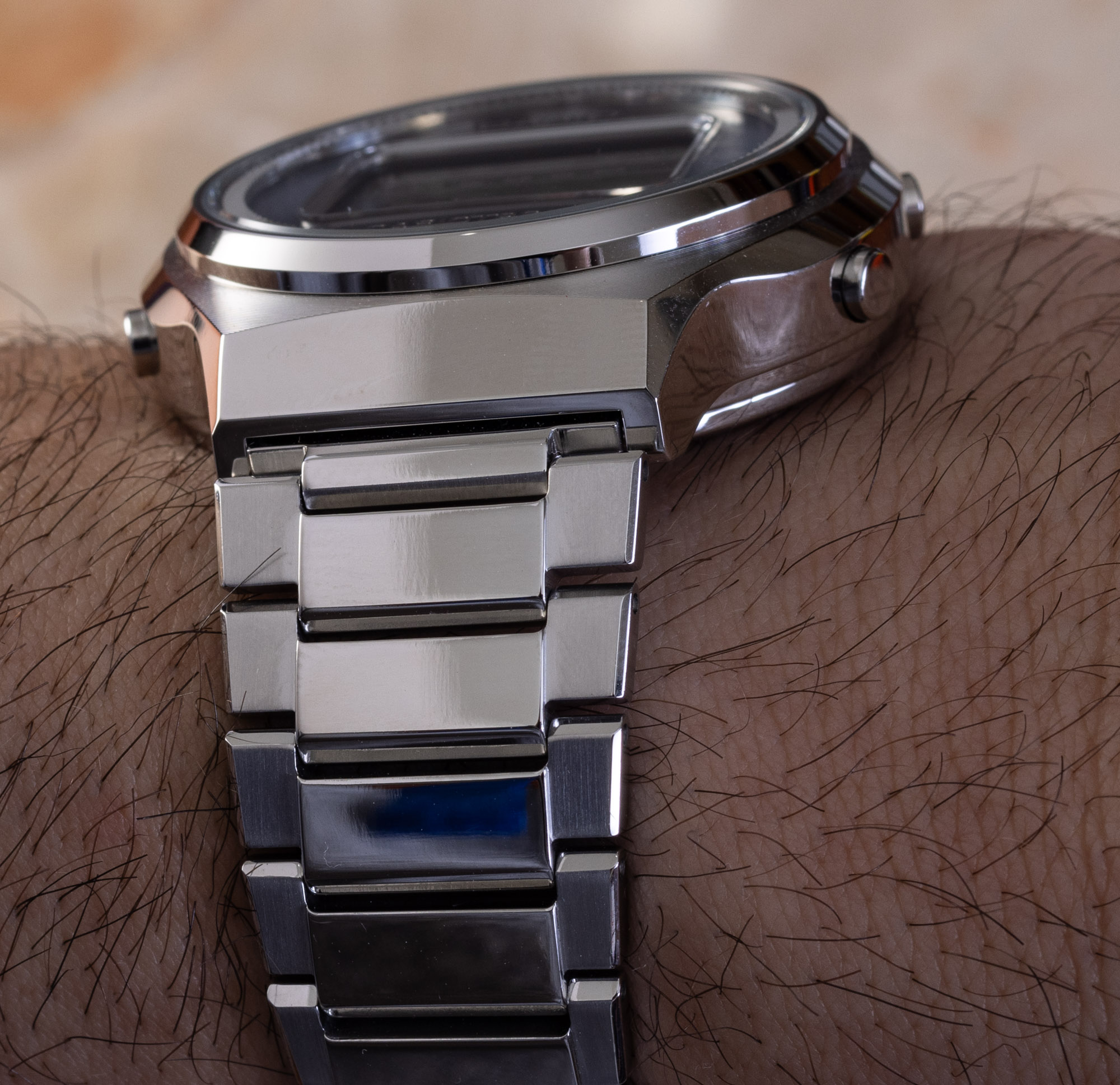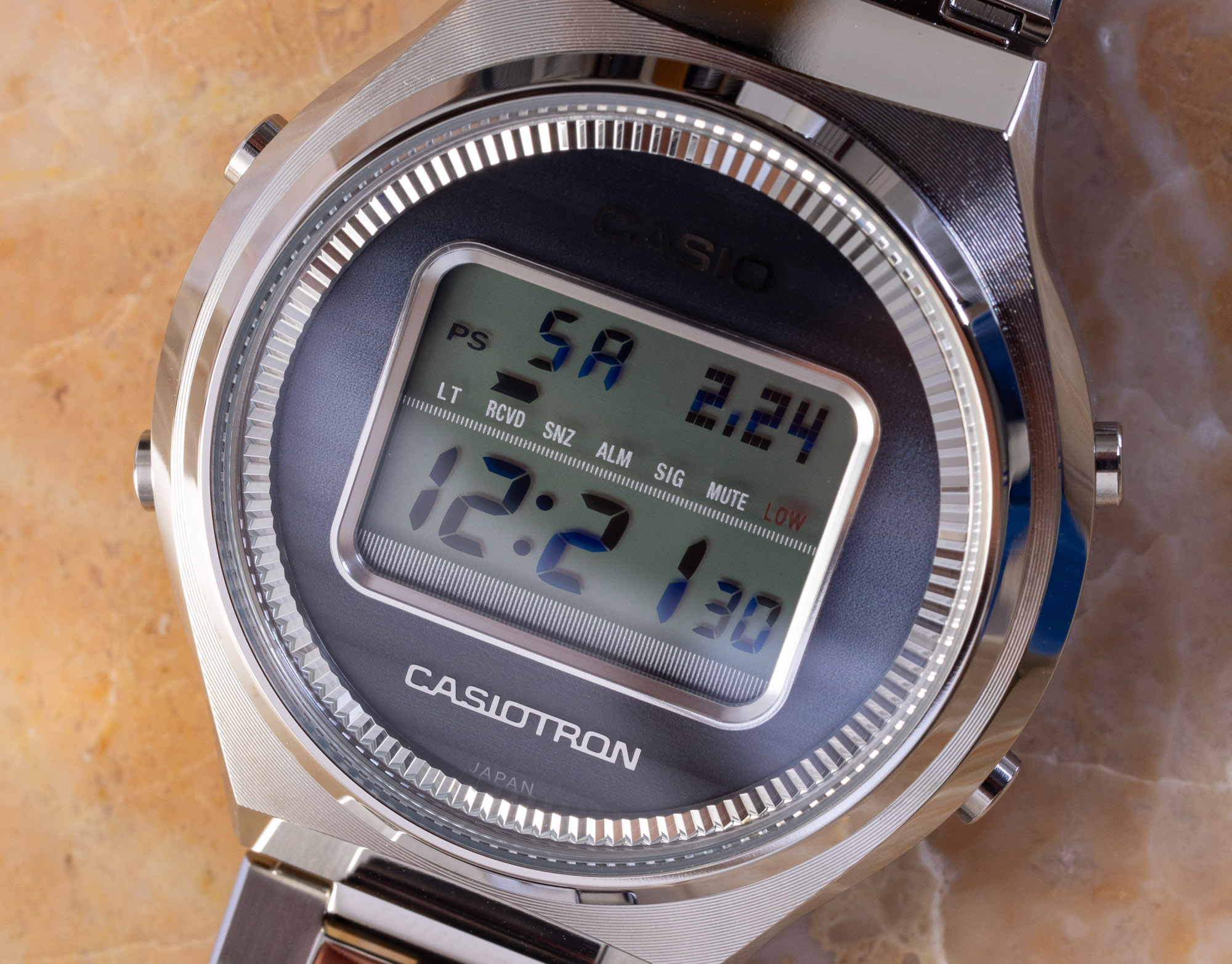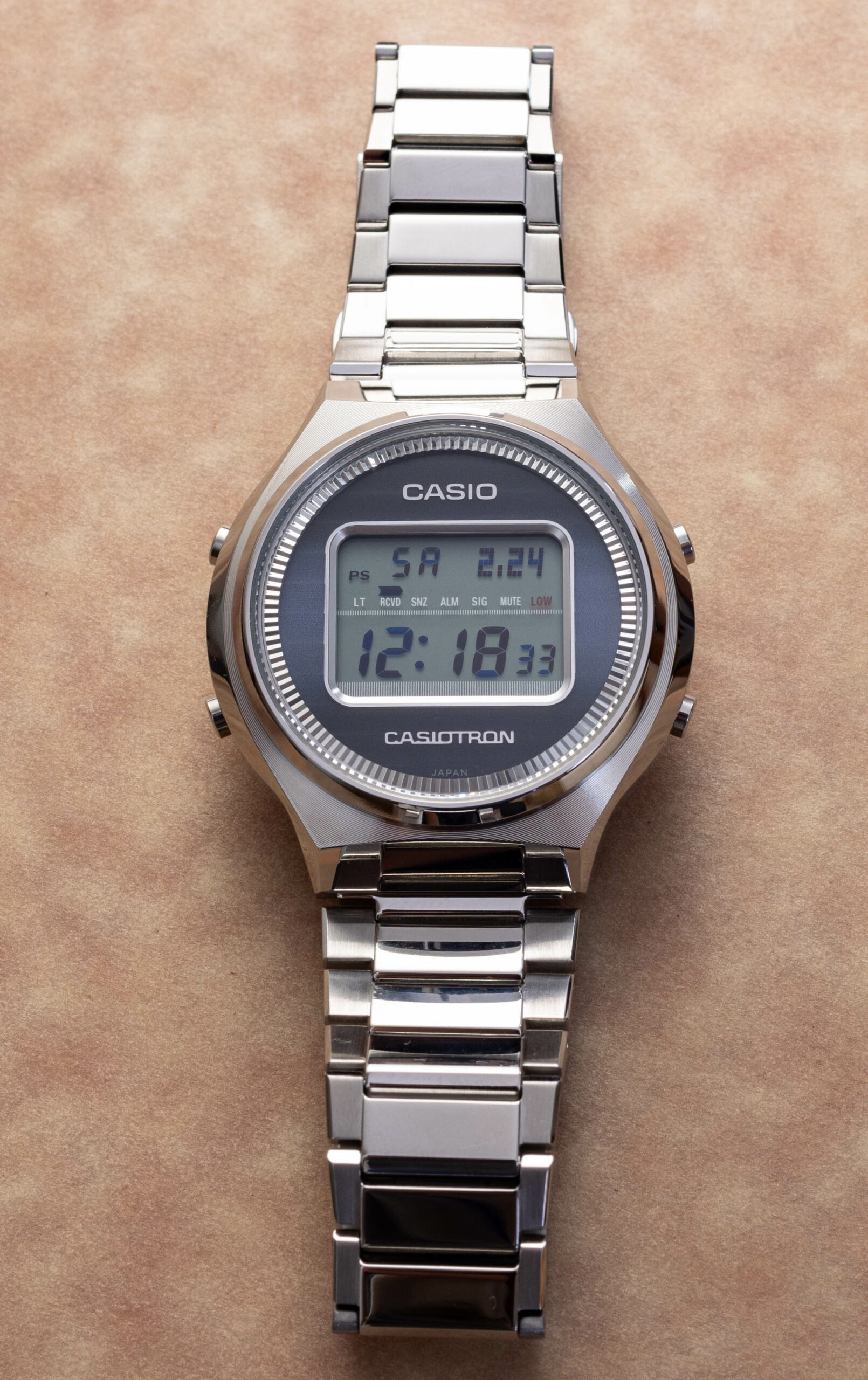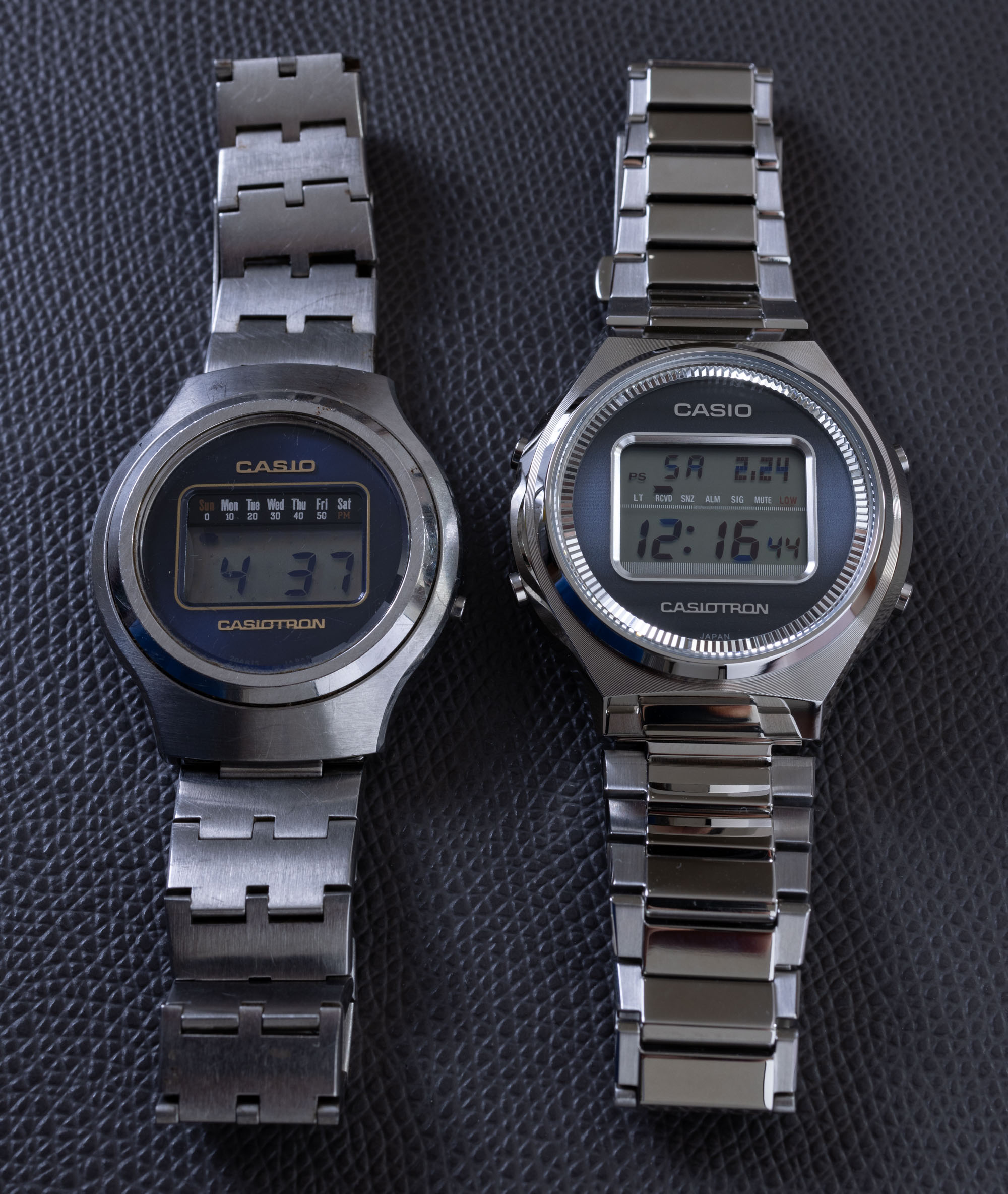
In 1974, Japanese technology company Casio released its first wristwatch with a product called the Casiotron. For a number of years before that, the innovative company had been increasingly interested in modern electronic calculation devices, as well as the wearable/miniaturization trend that was very popular with consumers. What that meant was the drive for product development engineers to combine more functionality into everyday objects (eventually, this trend led to dumb things being made by other companies, such as toaster ovens with radios), especially wristwatches. One of my favorite quirky Casio devices from this era was a higher-end mathematical calculator with a butane lighter built into it. When Casio released the first Casiotron device (Casio + “tron” that is the ancient Greek term for “tool” or “instrument”) in 1974, it heralded an era of serious “electronic gadget watch” development at Casio. This resulted in many highly fun or highly useful timepieces with loads of functionality (such as the G-Shock family that arrived in 1983), an ethos that continues in many forms at the company today. In 2024, for the 50th anniversary of the original Casiotron reference QW01, Casio has released the Casiotron TRN50-2A, a limited edition of 4,000 pieces that combines some of the brand’s modern technology with the look and feel of the original.
While this watch is all about nostalgia, what strikes me is that depending on your perspective, the sense of nostalgia that this watch evokes can be radically different. That is because watches like the Casiotron represented both the end and the beginning of eras. It represented the end of the serious hegemony of mechanical analog watches, and it represented the beginning of the ultra-precise computer watch era.
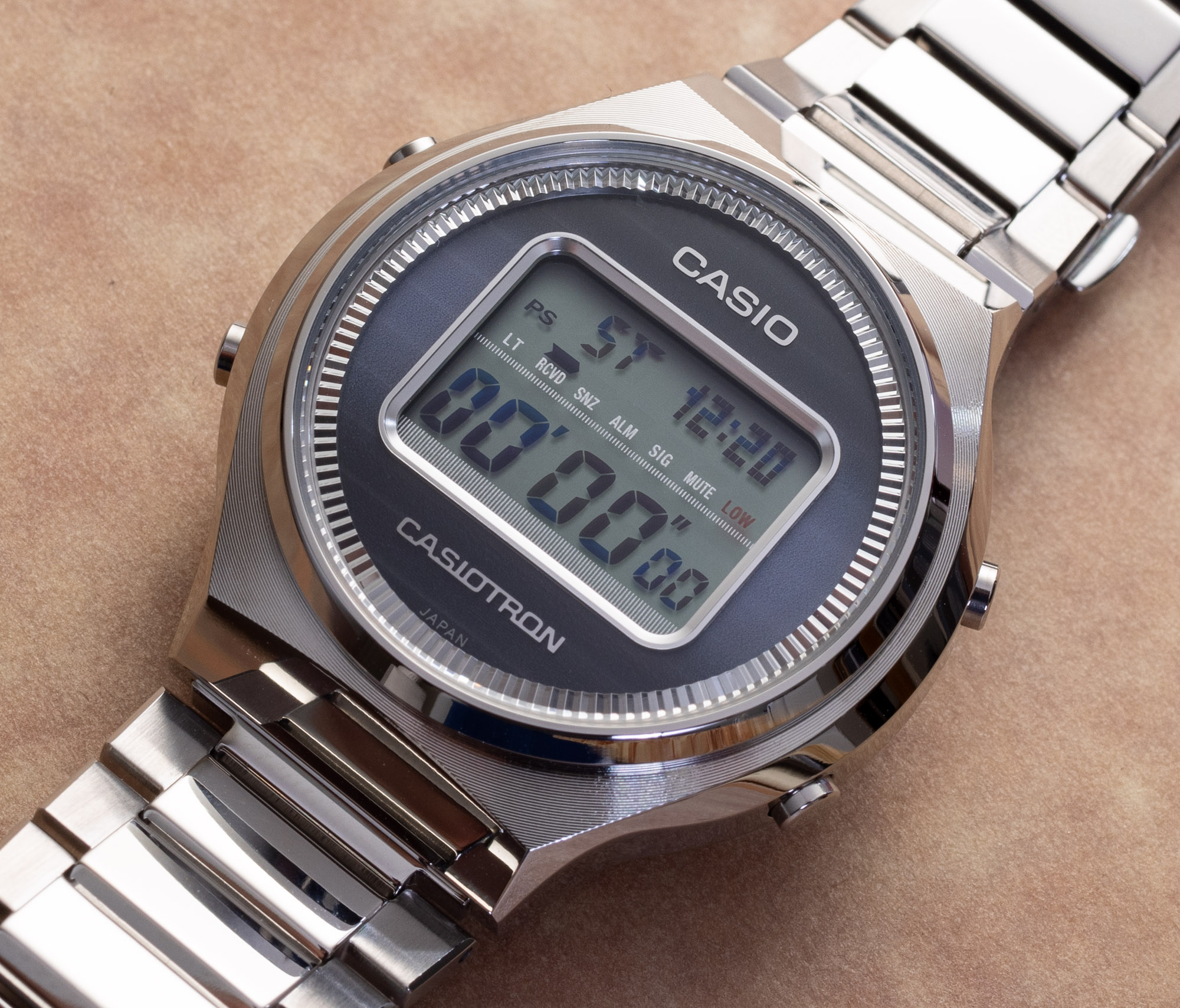
For a lot of wearers in the 1970s, a product like this was as innovative as a portable laptop computer. Remember that while analog watches are beautiful, their accuracy and precision were vastly supplanted by LCD readouts at the beginning of the digital watch era. Don’t forget that Japanese companies like Casio were not only instrumental in inventing new wristwatch gadgets with fresh and fun functionality, but they also led the effort to make such products affordable to the mainstream (the first quartz and later digital quartz watches were still very expensive). What were originally pricey luxuries or high-priced professional tools came down in cost, thanks to high-volume manufacturing and efficient production techniques such the printable integrated circuit. Such cost reductions in manufacturing made digital watches affordable to nearly everyone. The “mainstreamification” of modern timepieces is one of the biggest innovations that Japan provided in the digital watch era. Thus, for some watch enthusiasts, the Casiotron of 1974 represented the closing of the era of analog instrument watch dominance, and for others, it heralded the start of the accessible precision gadget watch era that continues in full steam today with smartwatches. This is another way of saying that this 50-year-old design is going to look very futuristic and very retro at the same time.
The beginning of the gadget watch era was interesting from a design perspective because companies like Casio (and its competition) were inspired by the style of traditional watches from that era. The resulting products contained modern circuit and screen modules (the “movements”) inside of cases with bracelets that combined aesthetics from two worlds. Some of the basic watch profiles and materials were the same as those used in mechanical watches, but none of these timepieces were mere emulations. Casio and its competition were emboldened by the optimism of the era, using highly polished metal surfaces and other glistening elements in an attempt to frame the sheer futurism and promise in these innovative wristwatch gadgets. Only as digital watches became more and more mainstream (with the accompanying further reductions in price) did digital watch design become more sporty and youthful. At first, digital watches were proud objects for serious wearers on a mission. A watch like the original Casiotron in the mid-1970s would have evoked the personality of a Rolex Milgauss combined with a Breitling Navitimer.
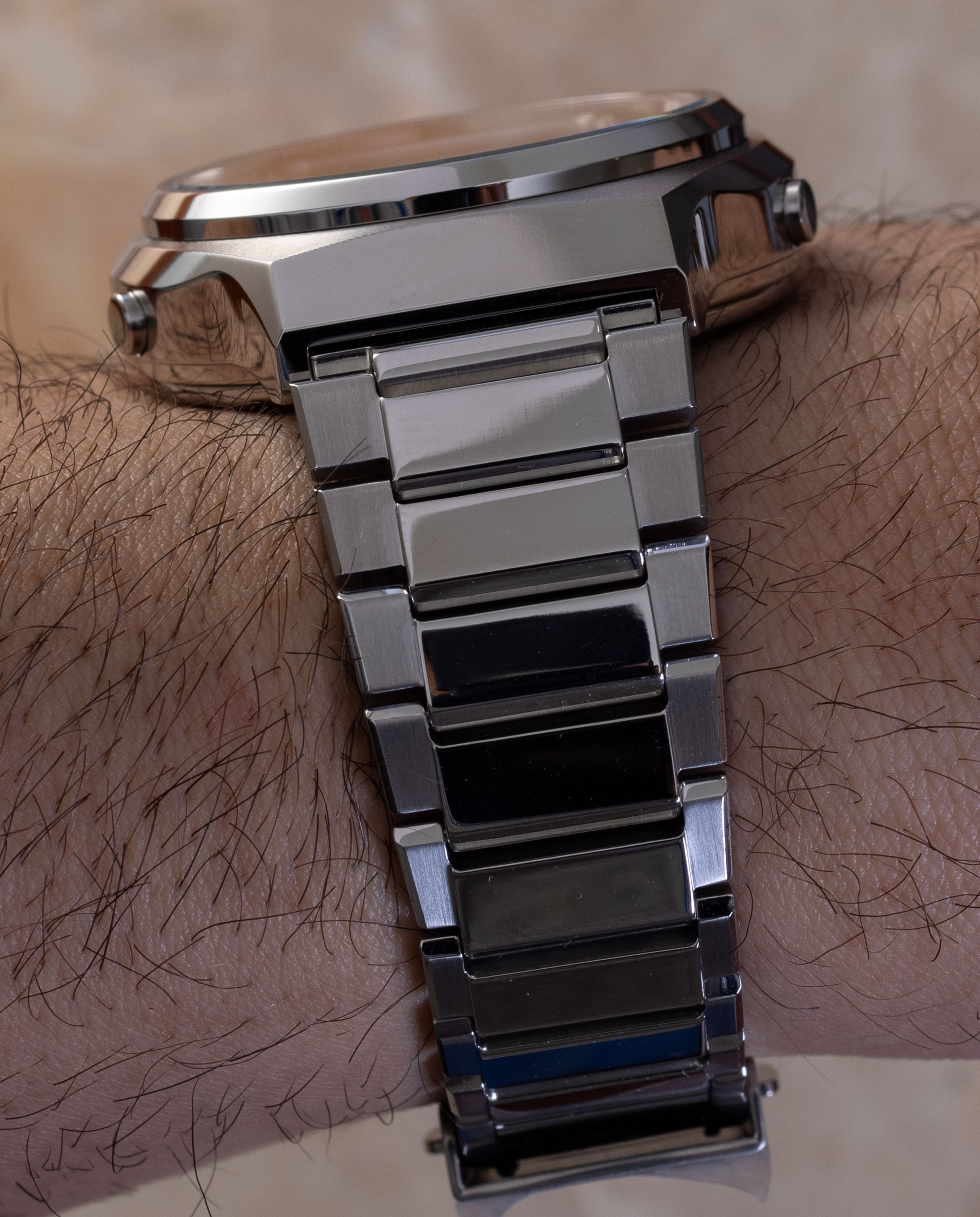
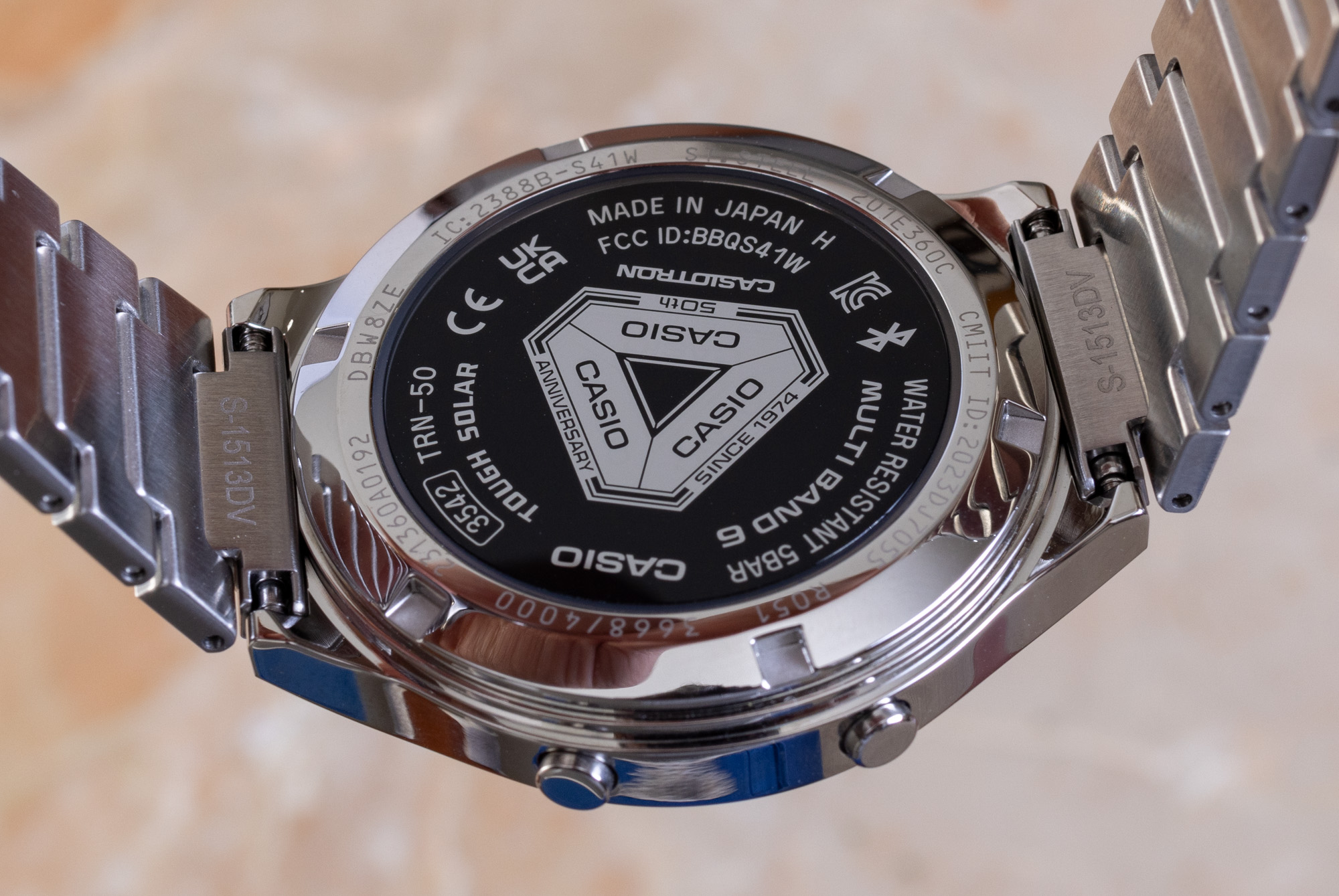
When Casio originally released the first Casiotron (a name that was used for future products into the 1980s), the primary technical innovation was the introduction of what we call a perpetual calendar into a digital watch. Most Casio wearers take their stack of timepiece functionality for granted, but it all started with a watch that sought to combine telling the time with a reliable calendar function (and the resulting display for it). Casio would then go on to prolifically add more and more functions to its watches in a process that continues in full force today.
Casio didn’t have immediate access to a 1974 Casiotron to shoot next to the 2024 model, but I did have access to a 1976 Casiotron model known as the R-11, which is very similar to the QW01 in terms of size and display. Casio wanted to make the re-release model very similar in size to the original, and it is, though the modern Casiotron TRN50 is slightly thinner than the original. Today’s Casiotron TRN50-2A has a stainless steel case that is 39.1mm wide, 12.3mm thick, and has a 42.7mm long lug-to-lug distance. The case is water resistant to 50 meters (save more durability for G-Shock models), and comes on an elegantly thin and comfortable integrated steel bracelet.
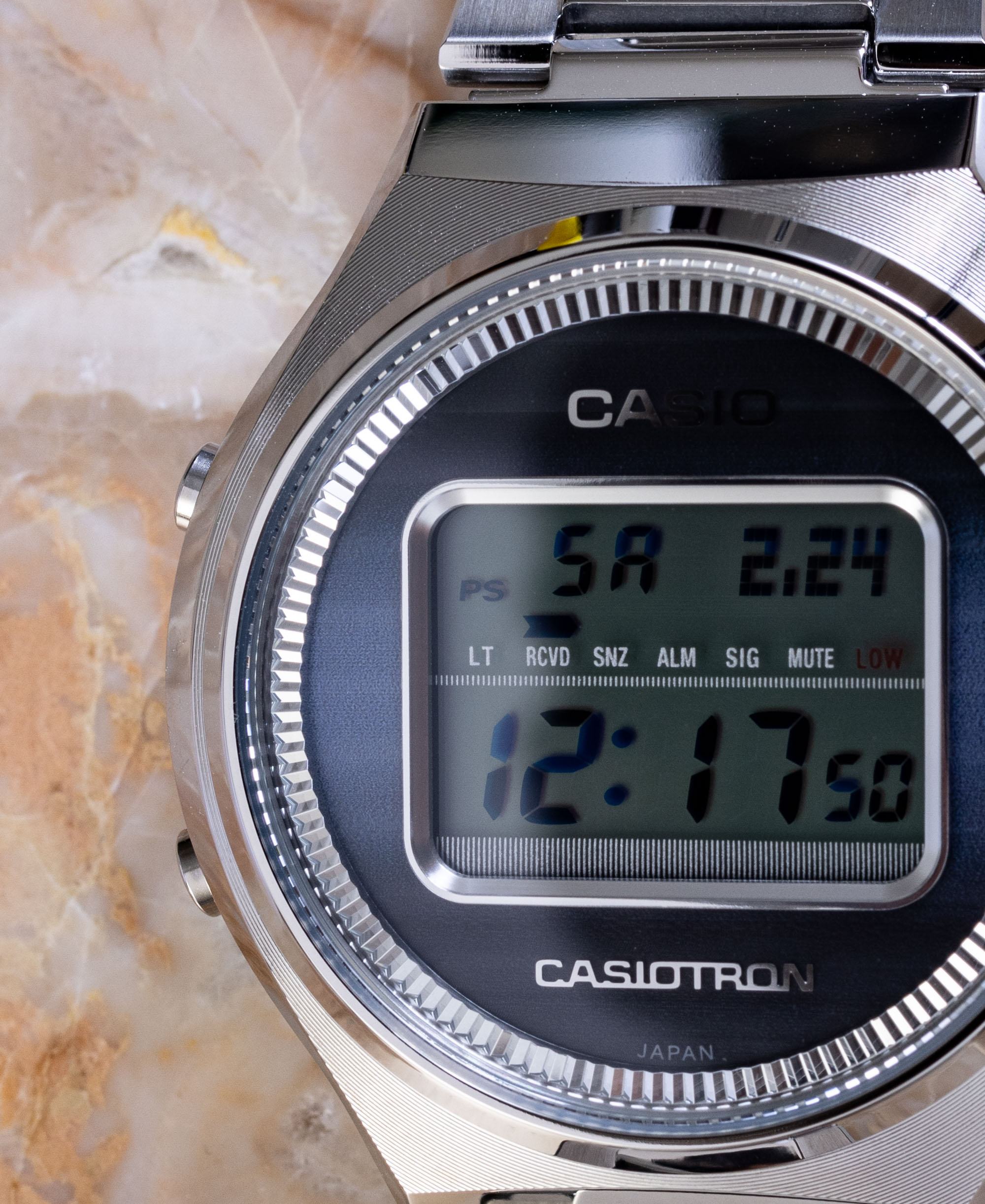
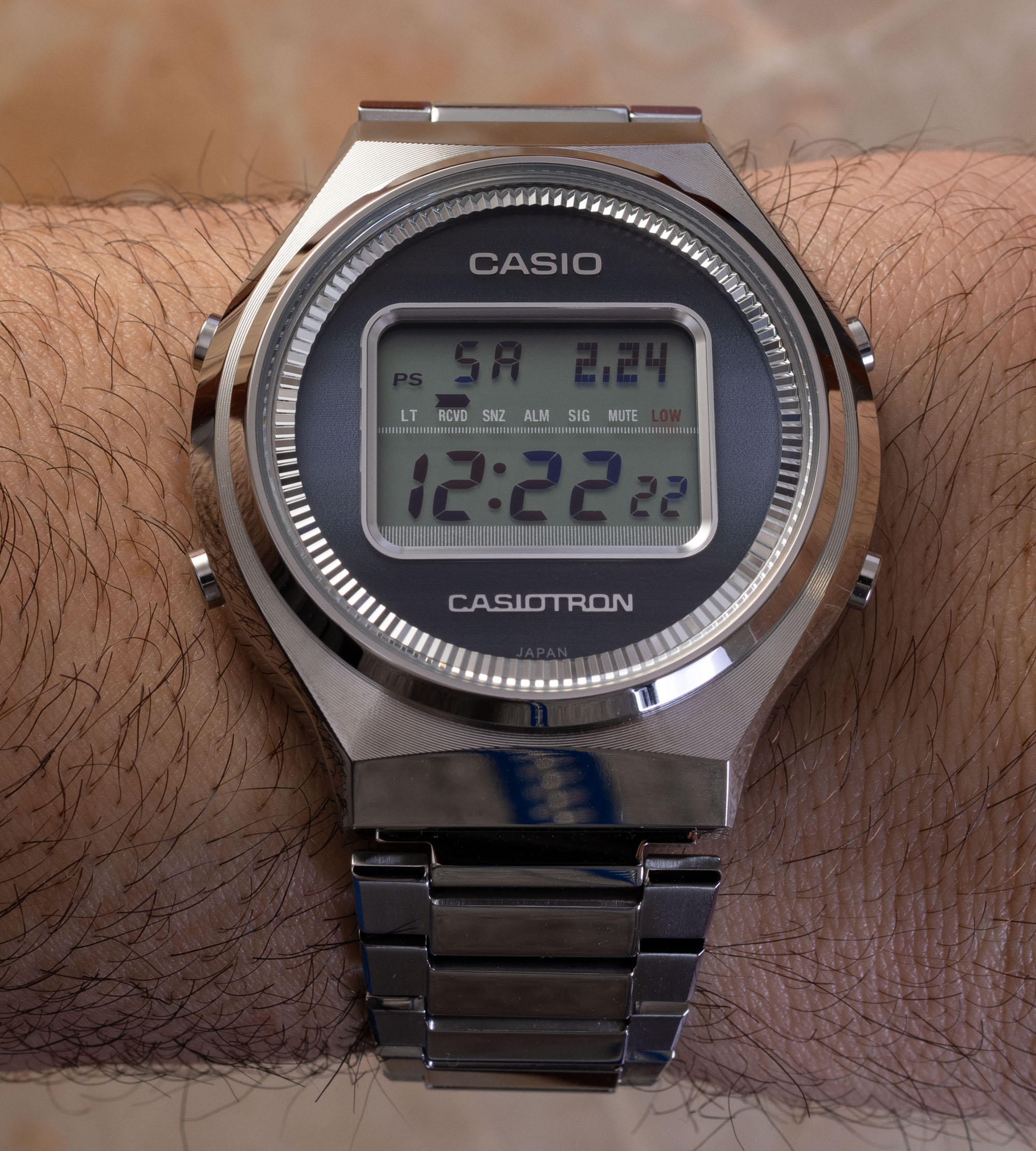
Casio really wanted to recapture the shiny futuristic optimism of the original Casiotron but in a way that didn’t require costly production techniques. The TRN50 likes to play with light in a variety of ways, whether it is the fluted ring around the round periphery of the face or the polished surfaces of the case and bracelet links. There are contrast areas as well such as the brushed outer bracelet links as well as the area on the top of the case around the bezel. Rather than a traditional brushed finishing, Casio employs an interesting circular grain surfacing on the steel. This is an interesting mixture of high-volume production techniques and decorative finishing that you rarely see in watches like this. Nevertheless, the 2024 Casiotron is still a higher-priced digital watch in the scheme of things – especially compared to the Casio “Vintage” collection watches that this limited edition model is thematically part of. Most of those watches are priced under $100, and many retail for less than $50.
Casio sells to a variety of consumer demographics, not all of whom want the same types of products. In many parts of the world, such as the United States, Casio sells a large volume of its lower-priced Vintage watches to mostly young, fashionable folks (not per se watch enthusiasts). These people like the watches for their simple, nostalgic, practical designs as well as the super low cost. There are also watch enthusiasts and tech lovers who enjoy Casio products, often willing to spend hundreds if not thousands for their next Casio product. These people are going to be the consumers most comfortable spending the money on the 50th Anniversary Casiotron, but they are going to be the least emotionally affected by it. I actually think that the Casiotron TRN50 is going to be a very attractive halo product to those people who are mostly emotionally affected by Casio Vintage products. They will love the better construction quality and, of course, the modern module that contains useful technology such as Casio’s Tough Solar battery charging, as well as Bluetooth connectivity.
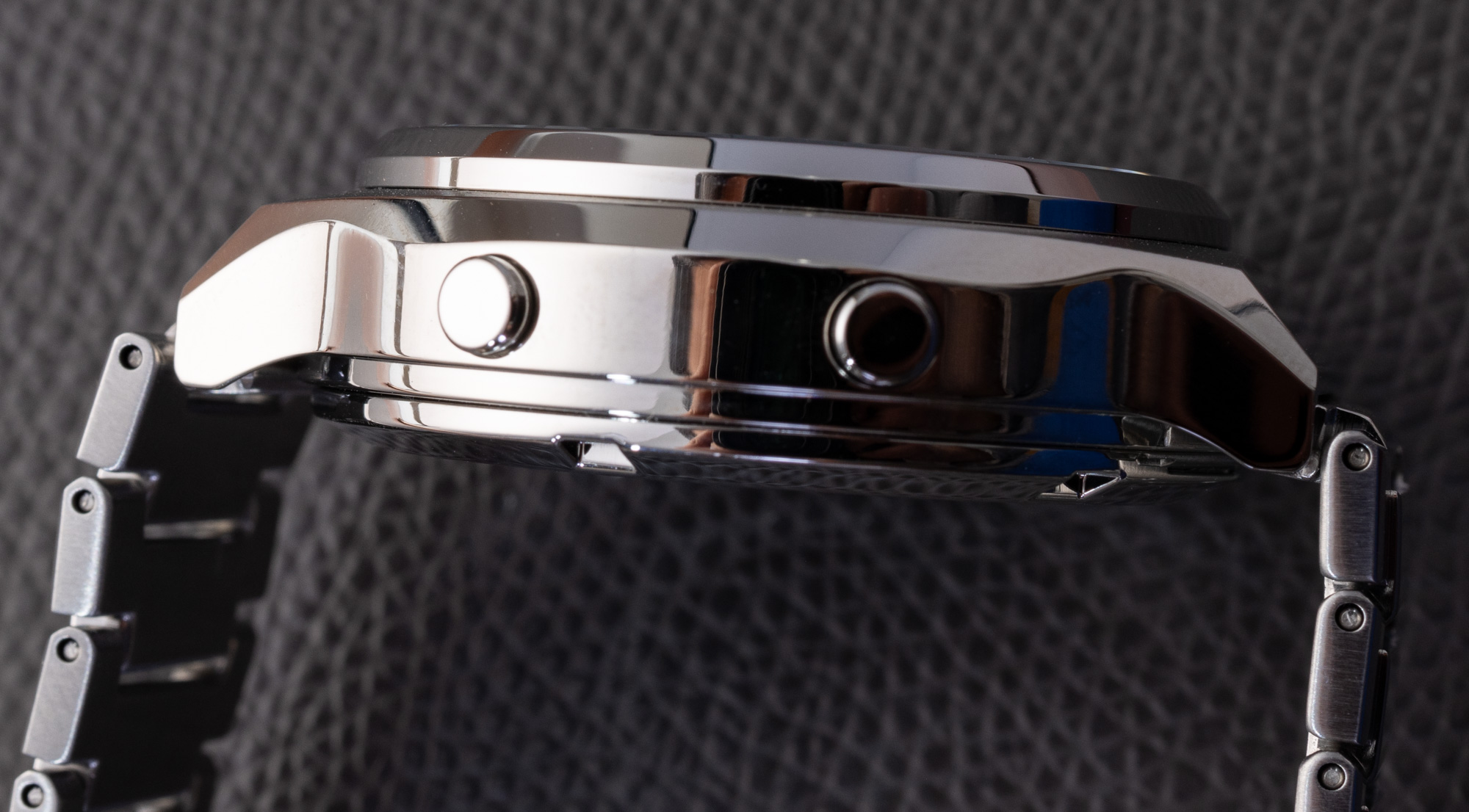
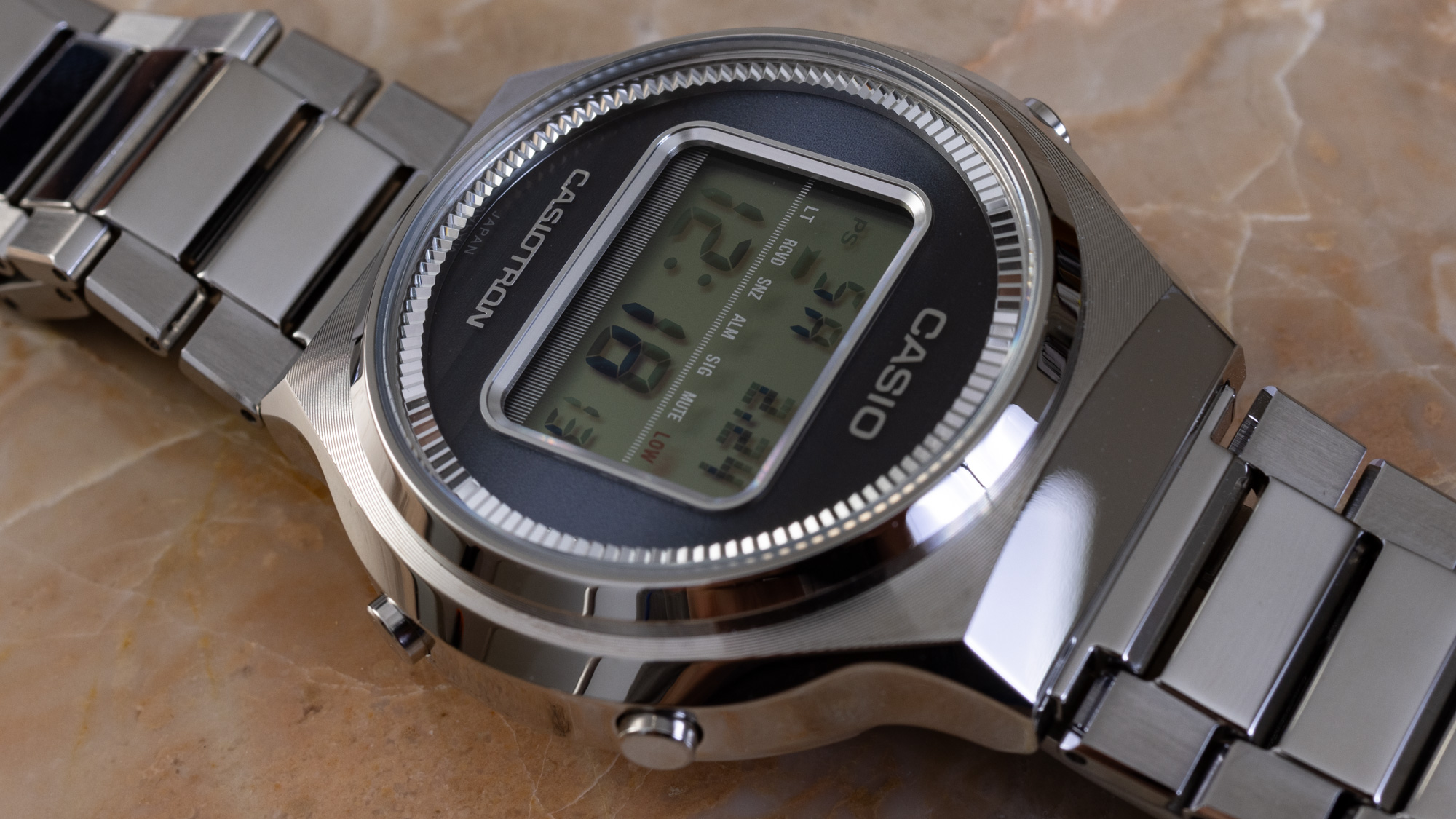
That’s really what makes the Casiotron TRN50 a good choice for enthusiasts, too. Finally, Casio has heeded calls to make a vintage-looking model with modern tech inside. Once you become accustomed to a modern Casio with Bluetooth connectivity, I find it hard to go backward and wear a more basic model as anything but a beater watch. Being able to have the “vintage look” with the modern wearing experience is probably the biggest selling point for the aBlogtoWatch audience in a slick timepiece like this. It’s solidly a Casio, but it offers a very different experience than G-Shock.
Inside the Casio TRN50 is the brand’s 3542 module. This is not the same dial as the original, but it’s based on it and has a lot more functionality. Finally, you can see a running seconds counter! In addition to the very easy-to-read and simple face, the module offers a few useful mode screens including world time, a chronograph, an alarm, and a countdown timer. You also get modern functionality such as radio-controlled atomic time adjustment, Tough Solar charging, Bluetooth connectivity to the Casio smartphone app, and a useful backlight. Still, the basic dial of the watch is all about reading the time and calendar, which, compared to many busy modern G-Shock dials, feels relaxed and wonderfully straightforward.
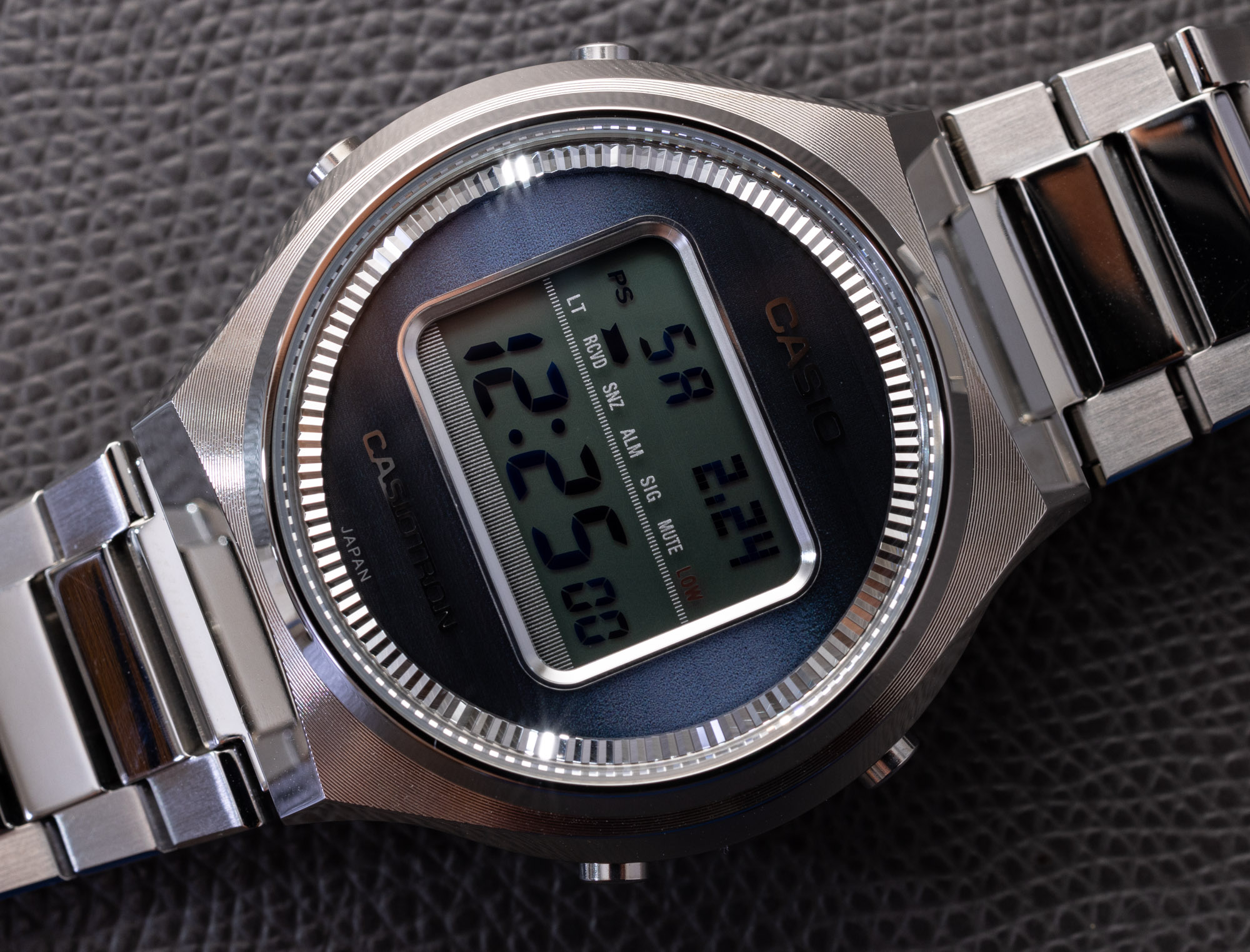
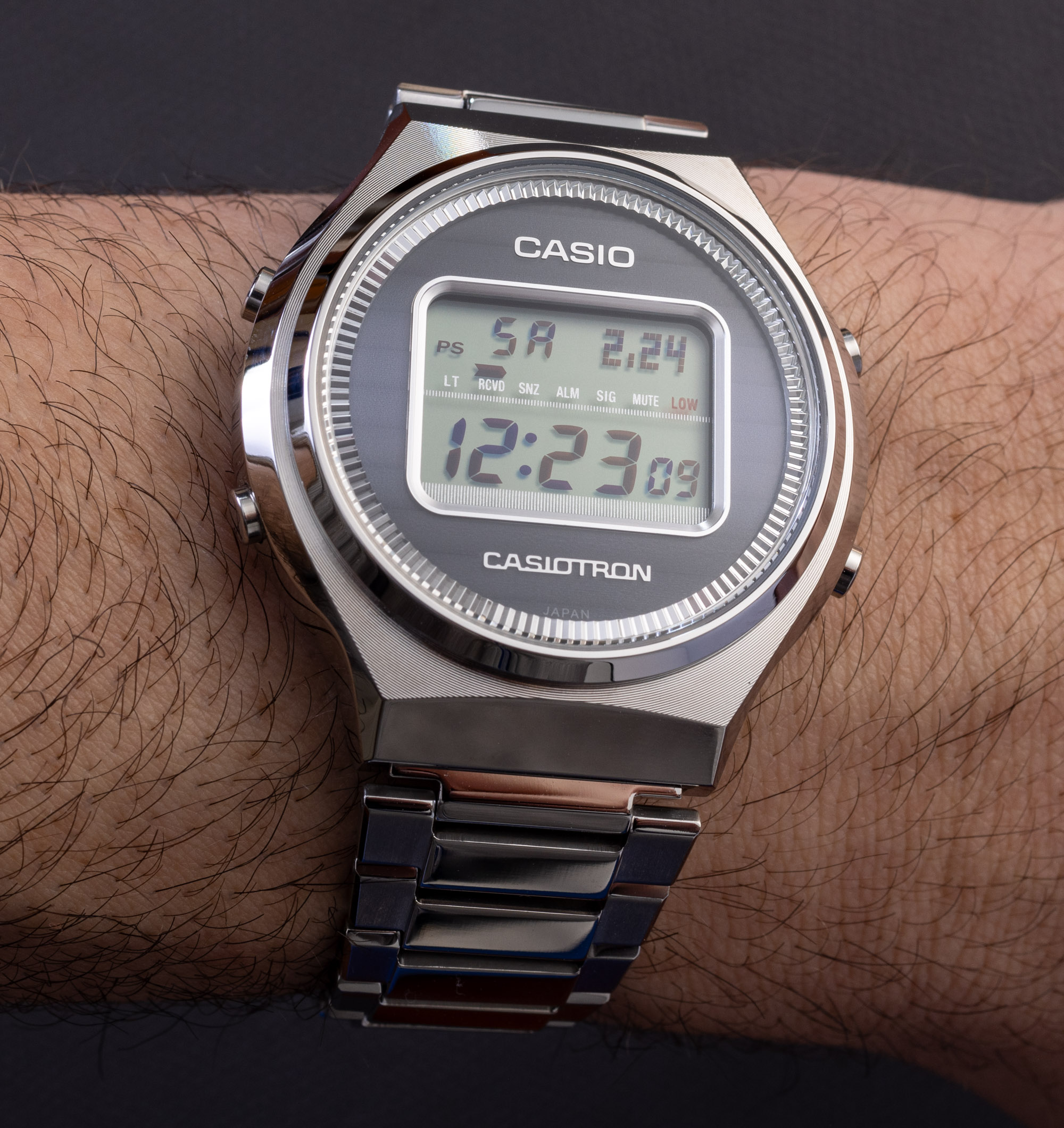
So much about modern wristwatch history can be discussed through the Casiotron TRN50 as a starting point. Many people will simply want to recapture a fun wearing experience that isn’t really available in original form, even though working vintage Casiotron watches are widely available (though ones in good condition are exceedingly hard to find, as people rarely kept these timepieces in drawers). A lot of folks recall their parents, or people around them, wearing Casiotron and other similar digital Japanese watches from the 1970s and into much of the 1980s. This was the digital watch before it was sporty, and when it was still a serious instrument for folks who appreciated (or needed) precision and purpose. This style made traditional analog mechanical watches look like dinosaurs at the time (and frankly, they were).
Casio hasn’t produced a limited edition in this large quantity in a while. It isn’t exactly clear to me why Casio didn’t just keep the Casiotron TRN50 as part of its core collection for a while, since I think people would purchase this model for at least a few years. It is possible that this 50th-anniversary model TRN50-2A is only a start and that we will see future color variations coming soon. I don’t really know. What I do know is that this watch is an admirable way to recapture the fun around Casio’s non-G-Shock universe, as well as a respectable way to celebrate the 50th anniversary of Casio’s start in wristwatches. Limited to 4,000 pieces, the Casio Casiotron TRN50-2A watch has a retail price of $500 USD. Learn more at the Casio watch website.

